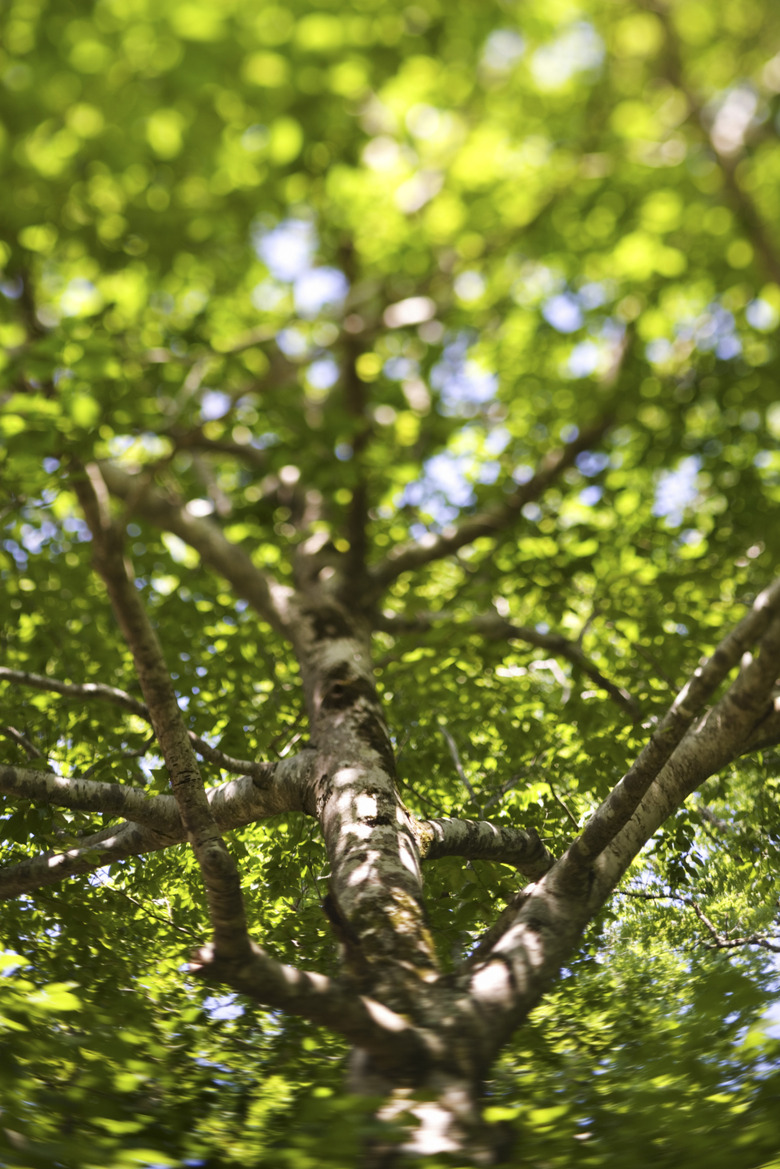How To Anchor And Stake A Tree With Rope
Things Needed
- 2 or 3-16" plastic ground stakes
- 50 foot package of 3/8-inch diameter twisted nylon and polyester rope
- 12-inch to 18-inch length piece of garden hose
- Utility knife
- Two people
- Lighter
A[ [rope ]](https://www.gardenguides.com/12273140-how-to-build-tree-house-rope-bridges.html)major aspect in landscaping is planting trees. All newly planted trees should be staked with rope for a period of 1 to 2 years or until they have had time to firmly establish their root system. Staking is an important part of their proper growth & stability. Likewise, young trees which are planted in a particularly windy location or on an incline, may eventually begin to lean in one direction as a result of the constant wind blowing against them. It is important to the strength of such a tree to get it straightened upright before it is too big to correct.
Step 1
Gather your supplies. All of the supplies needed are available at virtually any hardware store, and if possible, use an old discarded hose.
- A major aspect in landscaping is planting trees.
- All newly planted trees should be staked with rope for a period of 1 to 2 years or until they have had time to firmly establish their root system.
Step 2
Using the hammer or mallet drive the stakes into the ground at a slight angle pointing away from the tree, several feet away from the tree trunk. If you are straightening a crooked tree put them both on the same side and space them several feet away from each other for maximum leverage. Leave them sticking up out of the ground just a few inches so that you have access to them until you have the rope ends attached. Finish driving them in later.
Step 3
Thread the rope through the piece of garden hose to protect the tree trunk from rope burn. Wrap the piece of hose with the rope in it around the tree trunk just above the first branch.
Step 4
Stretch the rope taunt to the stakes. At this point have a helper straighten the tree. Thread the rope through the center eye on the stake and then wrap it around the ends. Tie it tightly with knots onto the hooks on the sides of the stakes. Cut the rope to the length that is required to reach the stakes with a utility knife, allowing plenty of extra length to use to tie it to the stakes. Once the rope has been tied, cut and anchor to the stakes. Finish driving the stakes into the ground so they are almost all the way in. Once you have cut the rope, but before you finish anchoring it to the stakes, take the lighter and lightly burn each end of it to singe it so that it won't fray over time. Just quickly hold the flame up to the end to melt it, don't catch it on fire. Just hold it there long enough to melt the ends.
- Using the hammer or mallet drive the stakes into the ground at a slight angle pointing away from the tree, several feet away from the tree trunk.
- Thread the rope through the center eye on the stake and then wrap it around the ends.
Step 5
Remove the materials used to stake the tree after a maximum of 2 years. If a tree is left staked indefinitely it will weaken the spot on the trunk where the tree is wrapped with the garden hose & rope. The trunk may actually be choked to the point that it will eventually cause the trunk to be weak enough to break or snap in half.
Tip
Depending on your area and the time of year you may be able to find a ready made tree staking kit. These are usually available at hardware stores or garden shops. These kits are available in a couple of different sizes for different size trees (trunk diameters). The lawn & garden centers are often a seasonally stocked area so if you can find them, these kits come complete with the stakes, rope & rubber hose to protect the trunk. Staking a newly planted smaller tree should be a lot easier and should not require the assistance of a 2nd person.
Warning
If a tree has been left to grow in a slanted position for an extended period of time then the longer it will need to remain staked. It will take a minimum of one year, possibly 2 years to firmly redirect a crooked tree to a permanently upright position. It takes time to for the roots to grow into it's new spot.
